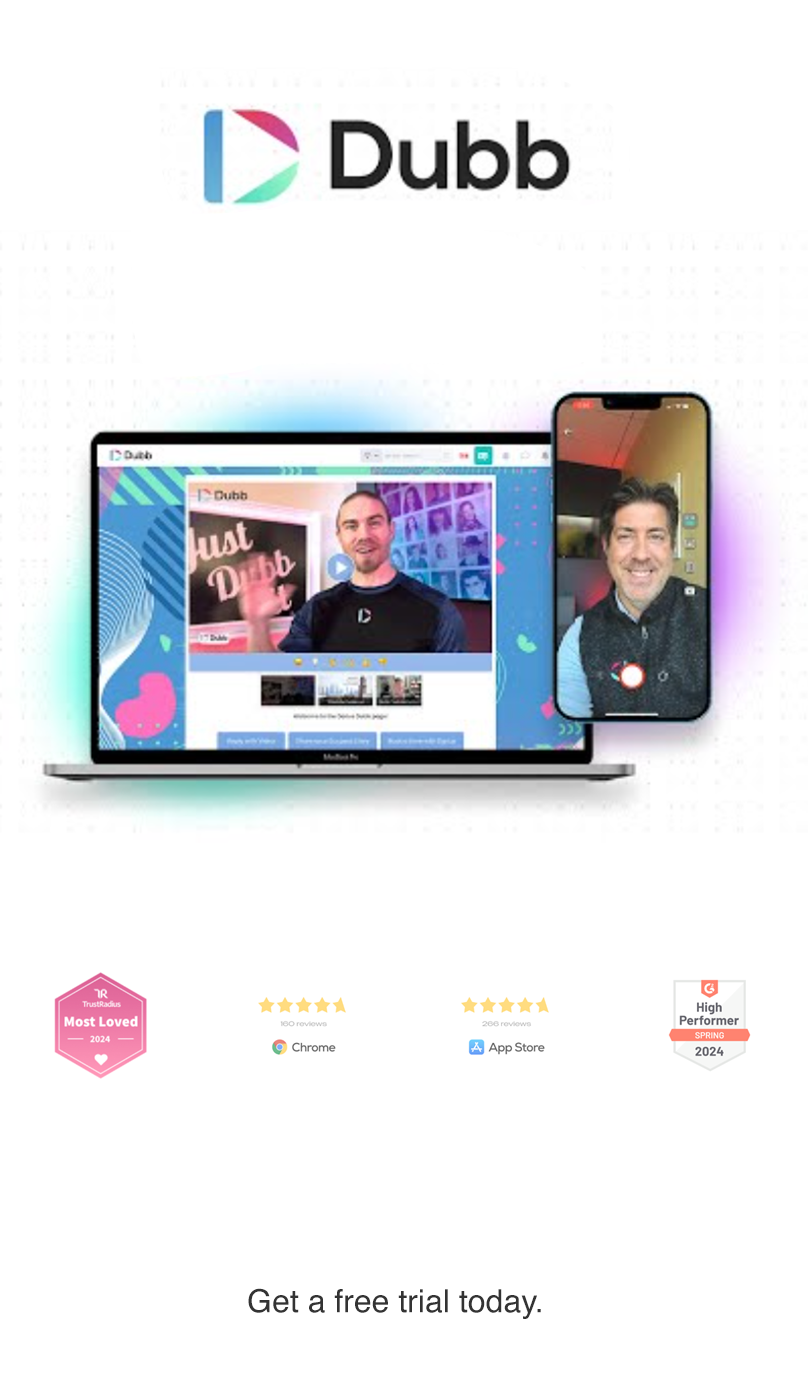Generating inbound leads is a task that should be on the mind of any marketer or entrepreneur, yet it may be more difficult than we anticipate.
Part of this is due to the fact that many marketing terms are confusing.
Sometimes, marketers just can’t talk like humans.
They resort to industry jargon that can take on a meaning of its own. If you approached a normal human on the street and used some industry jargon in explaining your current marketing strategy, that human probably wouldn’t know what you are talking about.
Therefore, I think it’s crucial to cut through the jargon and truly explain what we are trying to accomplish by generating inbound leads. By getting to the root of the strategy and what we are trying to accomplish, you and your team can design a stellar inbound lead strategy that can grow your business.
The Basics of Generating Inbound Leads
Inbound lead generation, for those of you who don’t know, is where you and your organization lay out a trail of information and incentives (like content) that prospects can follow toward your company. It is essentially trying to find people to ultimately bring them into our business, no matter what it is. This is in contrast to outbound lead generation, which requires you and your organization to actively reach out or send messages to your prospects. With outbound marketing, your team decides on the type and timing of each customer interaction. Inbound marketing, however, empowers your prospect, who decides when and how they are going to interact with your business.
Inbound lead generation is truly a paradigm shift. The value of inbound lead generation is that it is designed to bring people into your business and to give them value. You and your business release something out into the world (like content on your blog or even social media posts) and potential customers interact with it.
Some simple examples of inbound lead generation include a company blog, an infographic that you publish on social media, search engine optimization, a podcast, and, yes, videos—whether on your website or on a platform like YouTube. As you can surmise, much of inbound marketing allows you producing some type of content and then releasing it out into the world for your potential customers to discover. While there are some general principles in mind when you are trying to generate inbound leads (as we will discuss below), you ultimately will have to be generating content in order for your inbound lead generation strategy to truly work.
So even though it may take some time to develop, inbound lead generation can be extremely exciting—especially if some of your content goes viral. One awesome example of this is Dollar Shave Club. In 2012, Michael Dubin, the founder of Dollar Shave Club, produced a hilarious video outlining the benefits of becoming a member of the Dollar Shave Club, which was a fledgling, unknown startup at the time. The video cost $4,500 and took only a single day to shoot. But within 72 hours, Dubin’s video went viral, with over three million people viewing the video and tens of thousands signing up for Dollar Shave Club’s service.
This is just one example showing the power of inbound lead generation. If you create awesome, compelling content and share it with the world, warm leads will find your company. They will discover your organization’s value proposition and, in all likelihood, will become new customers.
That is the promise and opportunity of inbound lead generation. It can introduce your business to people that you wouldn’t necessarily expect. It can provide new insights into your marketing strategy, which you can later iterate upon for your future campaigns. It can force you and your team to exercise your creative muscles when developing content.
Overall, inbound lead generation is something that you simply cannot ignore.
Strategies on Inbound Lead Generation
Considering the importance of inbound lead generation itself, what can you do to maximize the odds of your inbound lead generation strategy succeeding?
At Dubb, we spend a lot of time thinking about inbound lead generation. One of our goals is to help our clients best leverage inbound lead generation to grow their businesses. Because of this, I have collected some key tips and tricks that any business can use to leverage their inbound lead generation campaigns.
Yes, each and every business is slightly different. Nevertheless, I believe that the tips and strategies below can help you create some stellar inbound lead generation strategies—no matter the age, size, or sector of your business.
Know and Target Your Audience
This is a critical component of any marketing strategy, and it is equally as important for inbound lead generation. Without knowing who your customers are and taking deliberate steps to target them, your inbound lead generation campaign will likely fall flat.
Just creating content for the sake of creating content isn’t going to work. Your inbound lead generation strategy needs to be more thought out than that.
Therefore, you are going to want to know and target an audience for your campaign. It can be a particular subset of people that you know purchase your products or it can be even more granular than that. Whatever it is, it helps to be deliberate here. Place some thought into who you are targeting and why you are targeting them.
That said, there is one key caveat here.
One of the beauties of inbound lead generation is that a customer outside of your target audience could find your content and react to it. In fact, your inbound marketing campaign may speak to an individual or group of people that you least expect.
So considering this, what do you do?
I think the best thing you can do is go forward and target your original audience segment. But when doing this, pay attention to who is actually consuming your content. See where they are coming from. And track it so that you can implement these insights in future campaigns (more on this below).
Design a Comprehensive Workflow
This is a critical step to generate a consistent influx of inbound leads. At Dubb, we tend to think of generating inbound leads through the following framework:
Create → Learn → Iterate
This is the attitude that we adopt when working to generate inbound leads. We spend a significant amount of time creating content that we believe will resonate with our audience. From there, we release it out into the world, spending a good amount of time who (and how) individuals are interacting from our content. From there, we learn from our successes and failures and incorporate that feedback into our next inbound lead generation campaign.
I’m not saying you have to necessarily follow our workflow. But nonetheless, you should develop a list of procedures and steps that you and your team follow when generating inbound leads. By doing this, you increase the odds that your inbound lead generation campaign will be successful.
Diversify Your Content
This tip dovetails with the first two. Because you don’t necessarily know who your inbound leads will be, it is in your interest to create content for different platforms.
As you know, we at Dubb are obsessed with video. And yes, video should be a critical part of your inbound lead generation strategy. But don’t hesitate to expand outward and try new things, whether that is creating an ongoing company blog or even a company podcast. Make sure to create content that is also SEO-optimized so that your content is easier to find on Google.
Ultimately, inbound lead generation is about experimentation and iteration. Don’t be afraid to try some of the newer platforms out there—even if they don’t feel like they fit into your “brand” or “image” in the marketplace. Sprinkle your content all over the internet and see what happens.
In all likelihood, you will expect some things and will be surprised by other things. That’s the beauty of inbound lead generation. As long as you accept the uncertainty and learn from your successes (and mistakes), you will find your inbound lead generation campaigns to be extremely fruitful.
A New Influx of Leads
Cutting through the jargon, generating inbound leads simply means that you are relying on awesome, compelling content to attract new customers.
The truly exciting part of inbound lead generation is that you can discover a new group of customers.
It taps into the beauty of the internet.
Anyone can release content out into the world. That content can affect thousands (or even millions) of people. And because there isn’t a distinct formula to make content “go viral,” all we can do is try. By putting your content out there and leveraging inbound lead generation, you are tapping into the power of serendipity. While you don’t know exactly what will happen, you do know that you will gain some unique insights about your content and your business.
Therefore, I encourage you to get started today. In all likelihood, you will find inbound lead generation to be an exciting and insightful process to market your organization.


